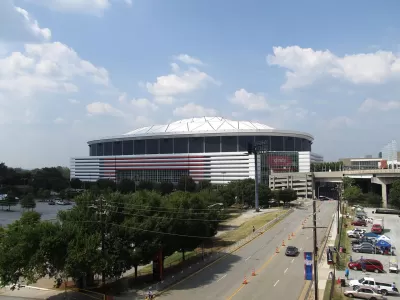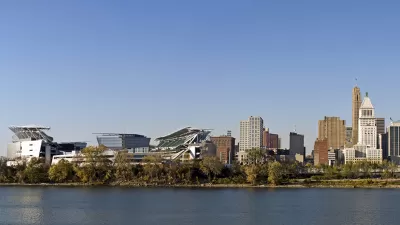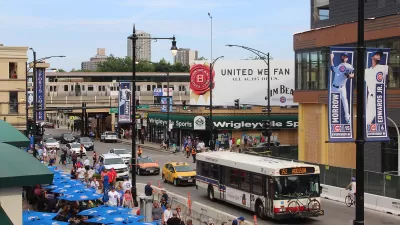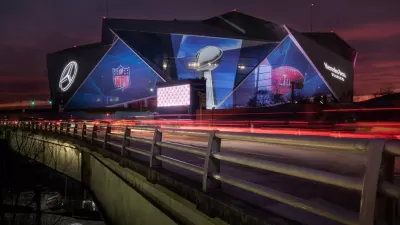In Atlanta—and throughout the country—city politicians have proven willing and eager to support stadium construction. But though these facilities are marketed as economic drivers, they often cause steep declines instead.

Stadium construction often depends on public funds and a good dose of city pride. "And yet the consensus among economists says that the public rarely profits from these massive investments, despite persistent claims by politicians and heads of chambers of commerce that stadiums and their ilk generate economic growth."
Atlanta's history of public investment in stadiums calls their "benefits" into question. "In Atlanta, four stadiums––two for baseball and two for football––have [...] actually contributed significantly to the de-development of what were once thriving middle and working class Black communities."
Lacking political visibility, communities around planned stadiums find it difficult to oppose the projects. The Atlanta-Fulton County Stadium, for example, was "paid for with parks and recreation tax dollars and built on land taken from owners through a federal urban renewal program. Construction of the Atlanta-Fulton County Stadium wiped out an entire neighborhood [...]"
When a new stadium appears, the surrounding neighborhood can become mere support structure. "Even after construction was completed, many people were displaced as landlords found it more profitable to evict families, tear down houses, and operate ad hoc parking lots where homes used to be. And once construction jobs dried up what was left were low-paying service industry jobs."

Planetizen Federal Action Tracker
A weekly monitor of how Trump’s orders and actions are impacting planners and planning in America.

San Francisco's School District Spent $105M To Build Affordable Housing for Teachers — And That's Just the Beginning
SFUSD joins a growing list of school districts using their land holdings to address housing affordability challenges faced by their own employees.

The Tiny, Adorable $7,000 Car Turning Japan Onto EVs
The single seat Mibot charges from a regular plug as quickly as an iPad, and is about half the price of an average EV.

With Protected Lanes, 460% More People Commute by Bike
For those needing more ammo, more data proving what we already knew is here.

In More Metros Than You’d Think, Suburbs are Now More Expensive Than the City
If you're moving to the burbs to save on square footage, data shows you should think again.

The States Losing Rural Delivery Rooms at an Alarming Pace
In some states, as few as 9% of rural hospitals still deliver babies. As a result, rising pre-term births, no adequate pre-term care and "harrowing" close calls are a growing reality.
Urban Design for Planners 1: Software Tools
This six-course series explores essential urban design concepts using open source software and equips planners with the tools they need to participate fully in the urban design process.
Planning for Universal Design
Learn the tools for implementing Universal Design in planning regulations.
Smith Gee Studio
City of Charlotte
City of Camden Redevelopment Agency
City of Astoria
Transportation Research & Education Center (TREC) at Portland State University
US High Speed Rail Association
City of Camden Redevelopment Agency
Municipality of Princeton (NJ)





























